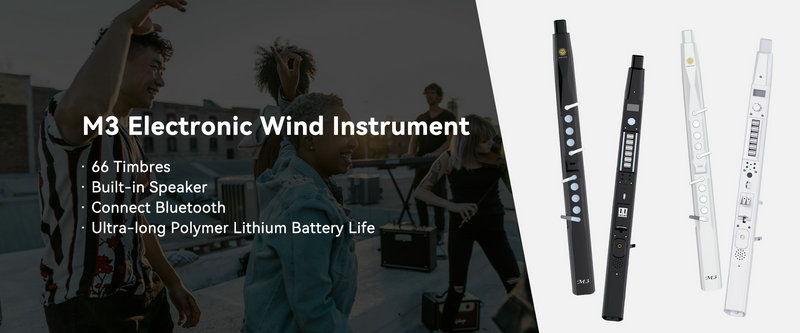Calibrating the sensitivity of the sensor in an electric flute is a crucial task that requires precision and attention to detail. The process can vary depending on the specific model and brand of the electric flute, but there are some common principles and steps that can be followed.
The first step is to understand the documentation provided by the manufacturer. This often includes a user manual or technical specifications that outline the recommended calibration procedures and any specific tools or software required. For example, some electric flutes come with dedicated calibration software that needs to be installed on a computer and connected to the flute via a USB cable.
Before starting the calibration process, it's essential to ensure that the flute is in good working condition. Check for any physical damage, loose connections, or dirt or debris that might interfere with the sensor's performance. Make sure the batteries are fully charged or the power adapter is properly connected if it's not a battery-powered model.
One common method of calibrating the sensor's sensitivity involves adjusting parameters related to breath pressure and key response. This might be done through a menu system on the flute itself or via the software interface. To begin, you might start with default settings and gradually make adjustments based on your playing experience and the desired response.
For breath pressure calibration, you'll typically blow into the flute at a consistent and moderate force while observing the readings or indicators on the calibration interface. The goal is to set the sensitivity so that a natural and comfortable breath produces the expected volume and tone changes. This might involve adjusting a slider or entering a numerical value until the response feels right.
Key response calibration is equally important. Press each key on the flute with a consistent amount of pressure while monitoring the corresponding feedback. You might need to fine-tune the sensitivity to ensure that the keys register accurately without being too sensitive or too sluggish. This can help eliminate false triggers or missed notes during playing.
In some cases, there might be options to customize the sensitivity for different ranges of the flute's pitch or for specific playing techniques. For instance, you could have separate settings for low notes, high notes, or rapid passages to optimize the performance in various musical situations.
Another aspect to consider is the overall dynamic range of the sensor. This determines how wide a range of volume and expression can be achieved. You might need to adjust this setting to match your playing style and the musical requirements. Some players prefer a wider dynamic range for more expressive playing, while others might find a narrower range more suitable for certain genres or performance contexts.
It's also important to test the calibration in real playing scenarios. Play a variety of musical pieces, exercises, and scales to see how the flute responds under different conditions. Make further adjustments if necessary based on your observations.
During the calibration process, it's helpful to have a reference point or benchmark. This could be a recording of a professional player using the same or a similar model of electric flute, or perhaps a comparison with a known, properly calibrated instrument.
If you encounter difficulties or are unsure about a particular setting, don't hesitate to reach out to the manufacturer's customer support or consult with other experienced electric flute players. Online forums and communities dedicated to electric flute playing can be valuable resources for sharing tips and troubleshooting.
In addition to the initial calibration, it's a good idea to periodically recheck and recalibrate the sensor's sensitivity over time. Changes in the flute's components, playing habits, or environmental conditions can all affect the performance and may require fine-tuning.
Some advanced electric flutes might offer more complex calibration options, such as adjusting the timbre or tone color based on sensor sensitivity. This can add another layer of customization to achieve a unique and personalized sound.
It's important to note that calibration is not a one-size-fits-all process. Each player has a unique playing style and preferences, so it might take some experimentation and patience to find the ideal settings that allow for the most comfortable and expressive playing experience.
Furthermore, when calibrating the sensor, it's crucial to be systematic and keep detailed notes of the settings you've tried and the results. This can help you revert to a previous working configuration if a new adjustment doesn't yield the desired outcome.
Calibrating the sensitivity of the sensor in an electric flute is both an art and a science. It requires a combination of technical knowledge, musical understanding, and a sensitive ear to achieve the best possible performance from the instrument.
Remember, the ultimate goal is to have an electric flute that responds precisely to your playing intentions, allowing you to create beautiful music with ease and expression.
SUNRISE MELODY M3 Electronic Wind Instrument - The best-selling Electronic Wind Instrument
. 66 Timbres
. Built-in Speaker
. Connect Bluetooth
. Ultra-long Polymer Lithium Battery Life



